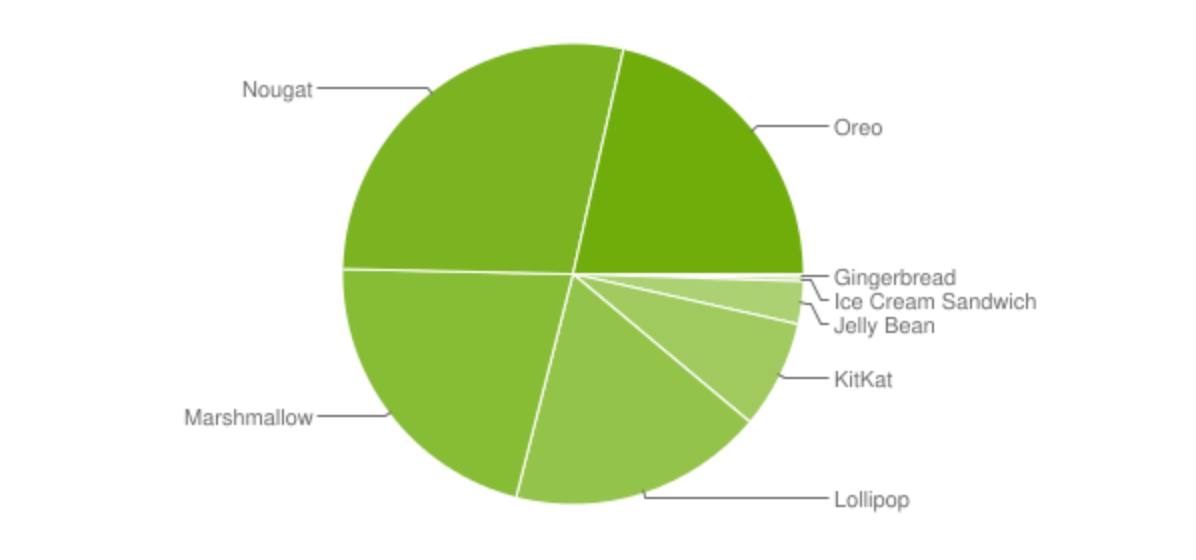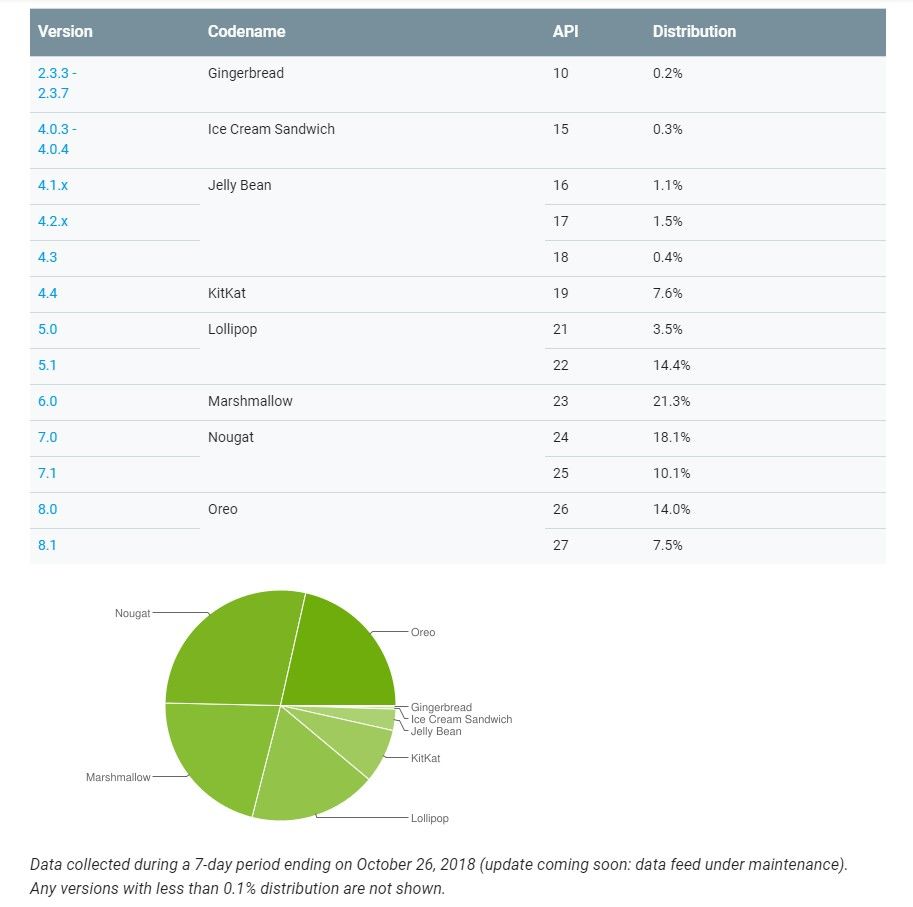Update 1 (5/7/19 @ 3:34 PM ET): After months of waiting and questioning, Google has finally published an updated Android distribution report (below).
Software fragmentation is the Achilles' heel of Android. Every year, Google releases a new version of the operating system and in a few months, the new version gets adopted by only a small percentage of devices. That is mainly because of the high cost of development for manufacturers and the lack of care from many users. However, outdated software can be insecure, so Google is trying its best to fix the situation by introducing initiatives like Project Treble and APEX. Yet it doesn't look like the overall update situation has much improved, although sadly our usual way of telling that is no longer possible. Traditionally, seeing the Android distribution of versions was as easy as checking this website, but things changed 6 months ago.
Google hasn't updated that Android distribution page with new statistics since October 26, 2018. Android Q is already around the corner, with its third beta releasing in less than two weeks, and Google's dashboard still doesn't even include Android Pie. Given that Android Pie is now standard on new Android devices and has already rolled out to most high-end flagships, it should already be on the radar. It may very well be, but we can't know because we just don't have that data. Here's how the dashboard looks now, showing 6-month-old data:
As you can see in the screenshot above, Google claims that the statistics are outdated because the "date feed is under maintenance." Considering that this message hasn't changed since it went up in December, Google must have a real issue with this feed. Or they just decided to quietly scrap Android distribution reporting. Google offers no comment when VentureBeat reached out to them.
This data is only useful for developers in helping them decide their apps' minimum API levels since Google Play now mandates that apps target recent API levels. The data also only accounts for users with Google Play Services installed, so it won't help Chinese developers. Lastly, the data is global, hence it may not be useful if you plan on targeting a specific region.
Update 1: Finally Back Up
Why did it take so long to get a new Android distribution report? It was allegedly due to an "unexpected loss of the source of the usage data." Regardless, the data is back and a lot has changed since October. Android Pie is finally checking in at 10.4%, Android 8.1 continues to climb up to 15.4%, and all other versions are dropping (except for 2.3, 4.1, and 4.3, strangely enough). Google says Android Pie distribution is a 150% improvement from Android Oreo at this time last year.
|
Version |
October 2018 |
May 2019 |
|---|---|---|
|
2.3 |
0.2 |
0.3 |
|
4.0 |
0.3 |
0.3 |
|
4.1 |
1.1 |
1.2 |
|
4.2 |
1.5 |
1.5 |
|
4.3 |
0.4 |
0.5 |
|
4.4 |
7.6 |
6.9 |
|
5.0 |
3.5 |
3 |
|
5.1 |
14.4 |
11.5 |
|
6.0 |
21.3 |
16.9 |
|
7.0 |
18.1 |
11.4 |
|
7.1 |
10.1 |
7.8 |
|
8.0 |
14 |
12.9 |
|
8.1 |
7.5 |
15.4 |
|
9 |
N/A |
10.4 |


